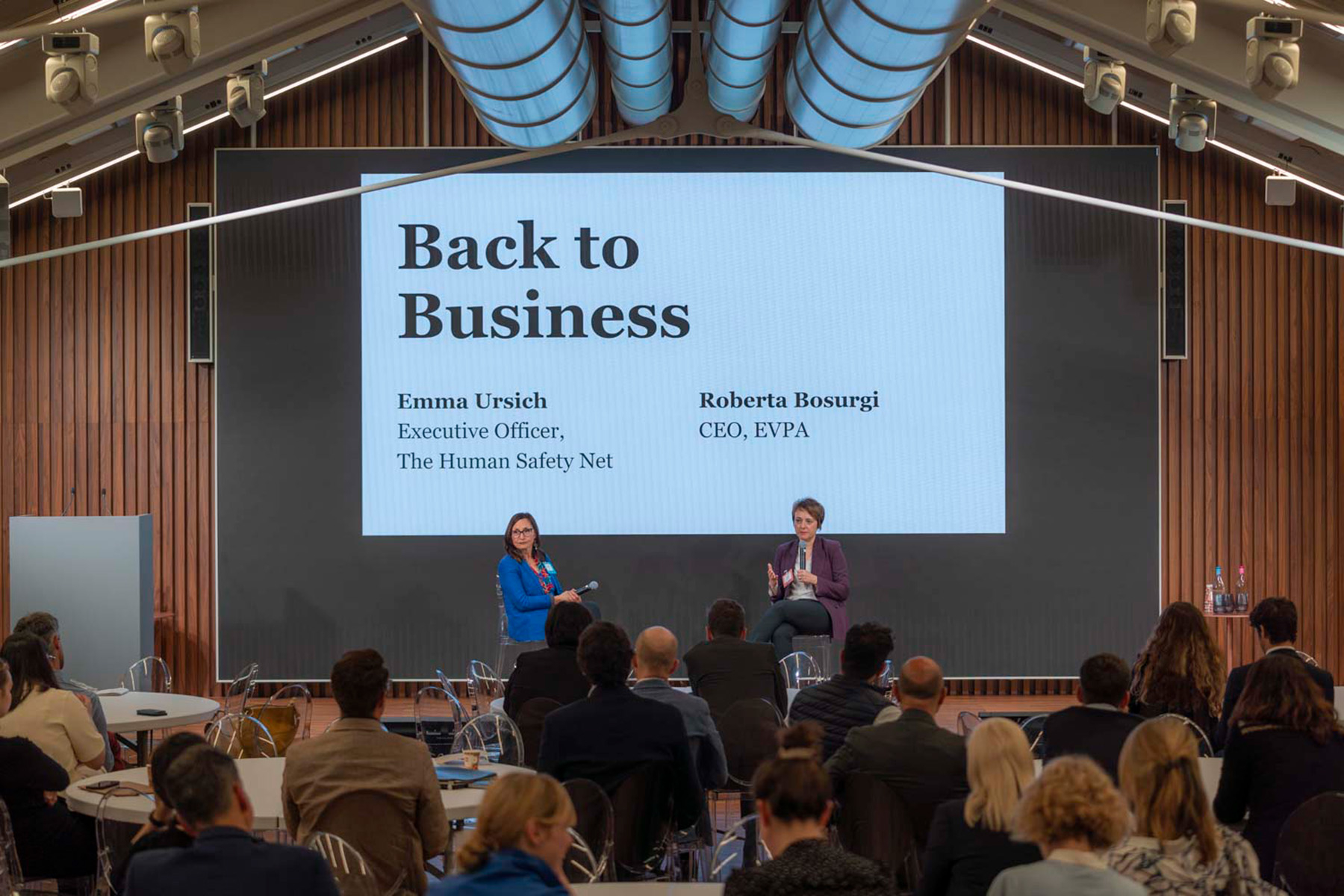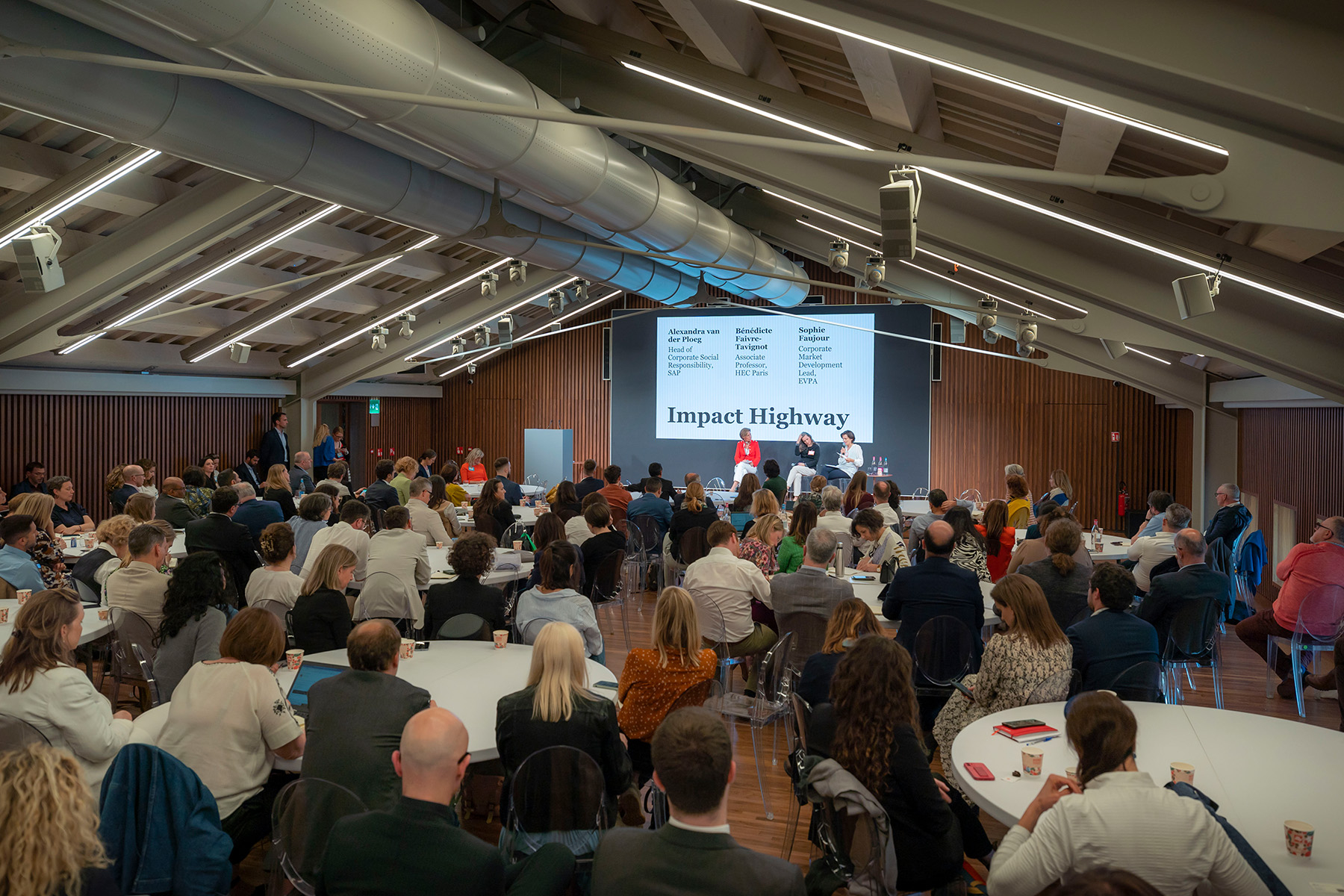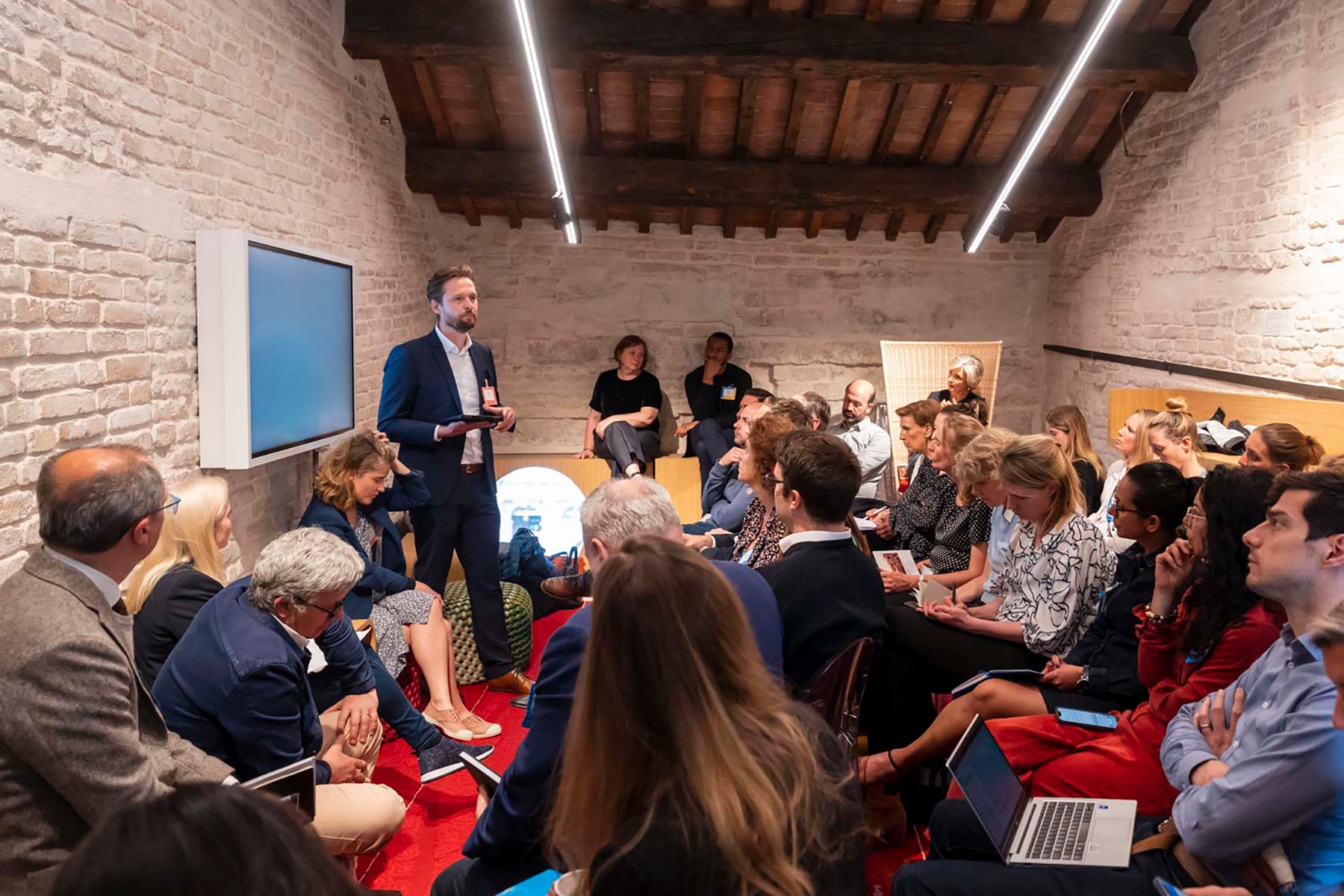Is there a magic recipe for scaling social innovation?
From our series Back to Business
Following 2023's Business of Impact in Venice, leaders of the event's breakthrough sessions share key takeaways and insights for the impact community.

As EVPA members and the wider corporate impact community gathered in Venice for Business of Impact 2023, there was plenty of discussion about scaling up proven or promising initiatives with potential. It is clear that the community of changemakers who attended have often found that the search for powerful solutions to achieve greater reach and create more impact is a path filled with frustration.
I had the pleasure of facilitating a lively panel discussion on the topic of scaling social innovation. Below are a few thought-provoking takeaways from our panel and audience participants.
Engaging in a decade to deliver
We talk a lot about the Decade to Deliver when it comes to the SDGs… and there certainly will be further work to do beyond this time limit. A 10-year horizon is likely what social innovators need to have in mind if they intend to launch innovation at scale. Panellists reflected on the importance of having strong sponsorship at the corporate leadership level and the need to diversify this where possible. Close involvement and steer on social innovation from people with strong business and commercial experience could lead to long-term rewards. One panellist shared how crucial it has been to bring various leaders on board, describing his role as a dialogue facilitator between finance and healthcare. However, strong sponsorship alone is not enough to be prepared for the journey. Most people sharing their experiences also mentioned the cultivation of personal and institutional resilience. Given that the overall time horizon is longer than in most corporate environments, there may be a need to create evolving objectives along the journey, to keep momentum and enable communication of success over time; such objectives could include everything from identifying promising ventures, to involving employees meaningfully to achieve relevant impact, to eventually identifying a path to sustainable finance.
Building alliances for removing roadblocks
The role of partnerships is also seen as a key factor for scaling-up innovation. These partnerships can take multiple forms. One of the panellists shared their experience with scaling an innovation for primary healthcare in an African country. They faced strong challenges in expansion, finding it difficult to get the right support from the government, which acts as the custodian of primary healthcare in the country. They have since been exploring a partnership with a UN agency in the hope of bringing improved visibility and uptake of the proven project through this alternative route. Additional panel participants mentioned knowledge partnerships, which help remove the internal obstacles found when developing in-house capabilities. Examples raised included a company and a technology partner using 3-D printing in the affordable housing space, as well as a company partnering with universities to scale training programmes for underprivileged youth.
Finally, the power of collaborating between competitors in what can be characterised as a “pre-competitive” space was mentioned. For example, the Covid crisis was an accelerator for such movements as many industries realised the need to offer a united response. Learning and exchanging ideas with competitors can be a powerful asset for industry changemakers who are building their own “internal business case” for pursuing social innovations. This creates an external pressure that leaders from each organisation must respond to.
Shaping a platform of benefits
One of the panellists mentioned the term “platform of benefits” which is a great way of reflecting the multiple purposes of building any social innovation initiative. Even though the main objective is to reach a certain impact to vulnerable populations, many other advantages can result in the process. For instance, it could be assisting the human resource development for any hosting companies, or building a curated pipeline for potential investors, as well as building new connections and business ties with unusual stakeholders. The platform of benefits term resonated with the audience, and most of them shared that they enriched and diversified the rationale of their own initiative over time to sustain the momentum of their internal business case.
Being ready to learn and play with financial vehicles
The question about “finding a home” for social innovation was covered through multiple lenses. One is to find the right economical vehicle to sustain initiatives when they deliver results. Most social innovations originate from the philanthropic arms of corporate organisations, but this welcoming home could soon become a limiting factor in their development.
One panellist shared how his impact fund was explicitly designed to be a part of the group’s core business. However, it required a lot of convincing with the finance department before they were open to welcome funding from other potential partners. The lead of this initiative discovered a wide array of potential co-financing mechanisms from large institutional donors that could enable acceleration of early-stage funding.
For initiatives that have been set up with an ambition to be incorporated into their host organisation long-term, there is a crucial imperative to understand whether the initiative’s financial performance could fit with the overall organisation’s performance expectations. I shared two different examples from our company, where in one case we decided to invest in a joint venture, hence enabling us to drive specific financial performance expectations whilst continuing to scale the impact from within. Knowing how to successfully spin off social initiatives and gain strong returns is still a feat that very few organisations have been able to master.
There are still a lot of questions surrounding external venture initiatives that corporates/investors want to support and scale, particularly when it comes to finding the right mix of investment tools. As revealed during the session, some sectors that have received large investment over the past decade, such as energy, are still relying heavily on debt financing instruments. Deploying equity financing instruments at scale still requires overcoming a lot of practical challenges linked to hosting countries and the structure of local markets.
When wrapping up the discussion at Business of Impact 2023, we reached consensus on the fact that there is no silver bullet to solve such a broad and diverse topic as scaling social innovation. The key takeaways from the session were the sparks that ignited more focused debate on current initiatives among the EVPA members. I hope this inspires others to explore and focus their search in building the resilience of promising social innovations in their path to scale.
---
Lionel Bodin is Managing Director Europe, Accenture
Disclaimer: The views and opinions expressed in this blog reflect those of the author and do not necessarily reflect the views or positions of any entities and participants to the Business of Impact 2023.





